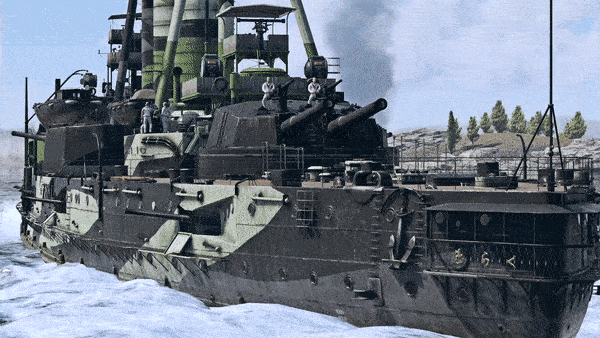
Battlecruiser Kurama, the most advanced Ibuki-class ship, will be the grand naval prize of the upcoming Tokushu Heiki event!
Kurama, battlecruiser, Japan, rank V. Event Vehicle.
Features:
- More firepower in the form of auxiliary weapons.
- Improved armor protection.
- Low speed.
Kurama, the second Ibuki-class Battlecruiser, was launched in October 1907 with the name Kurama given to it after Mount Kurama in Japan. During the First World War, Kurama was used to a limited extent, in operations in the South Pacific in search of Admiral Spee’s fleet, and then to cover landings on the Mariana and Caroline Islands. After the end of the war, Kurama was transferred to the northern fleet, where it provided cover for Japanese landing forces during the intervention in Russia. In 1922, it was disarmed under the terms of the Washington Agreement, and then subsequently scrapped for metal.
Battlecruiser Kurama will arrive at Japan's Bluewater research tree as an event vehicle which can be obtained during the upcoming Tokushu Heiki event that starts on September 26th! Kurama offers 305 mm main battery guns, an excellent selection of auxiliary caliber weapons, and alongside this, good armor protection — but with this, low speed and maneuverability, and a fairly long reload time. Let’s dive into the details!
The closest relative of the upcoming Battlecruiser Kurama is the classic pre-war cruiser Ikoma. Kurama can be seen as the result of development of Tsukuba-class ships, although not all plans to improve these ships came to reality. Let’s compare them — what do these two pre-war ships have in common, and how do they differ? To start, their combat capability is similar in the form of 4 x 305 mm guns in two turrets that have excellent armor for this time period. Next, the hull itself is also well protected, with the Kurama’s armored deck in general being superior to the Ikoma — and thanks to this extra thicker armor at the bow and stern, the Kurama’s survivability is increased.
The main difference between these two ships lies with their additional weapons. 6 x 152 mm guns in casemates along the sides are replaced with 203 mm guns, with four guns on each side. It’s certainly worth noting that 203 mm guns are typically the main caliber for Heavy Cruisers, but on the Kurama they’re additional auxiliary guns. A large gun on pre-war ships typically means a longer reload, and unfortunately the Kurama is no exception to this, meaning each volley that you fire will require careful aiming.
In addition to the long reload times, we’d also like to mention that the Kurama is slow — coming in with a top speed of just 21.25 Knots (39.3 km/h). The Kurama also lacks fast-firing anti-aircraft guns, as these types of guns were simply not needed around this period of time. Having said this, the Kurama can still hold up against aircraft at medium altitudes, which sets it apart from many ships of the First World War time period.
Want to add the Kurama to your classic pre-war naval collection? If you do, it’s going to be available to obtain in the upcoming Tokushu Heiki event, with the details surrounding this event being released on September 25th. Stay tuned to our news and see you soon!




